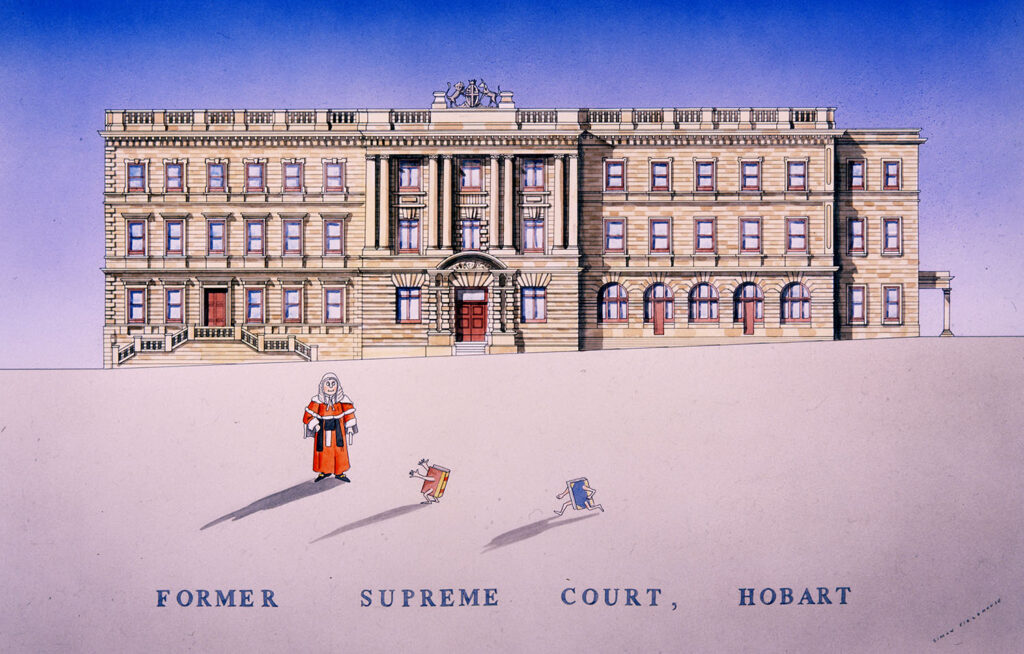
Former Supreme Court Building in Hobart
The
stands as a historic monument and a symbol of Tasmania's rich legal heritage. Located in the heart of Hobart, the capital city of Tasmania, this imposing structure has witnessed centuries of legal proceedings, serving as a significant center for justice, and reflecting the evolution of the island's legal system.
Built in 1823, the Former Supreme Court Building has a captivating neoclassical design, with its iconic columns and a grand façade that exudes architectural elegance. The construction of this edifice was part of the broader colonial development in Tasmania, reflecting the British colonial influence and Tasmania's shift from a penal colony to a self-governing entity. The building itself served as a physical embodiment of the legal framework within which Tasmania's justice system operated.
Throughout its long history, the Former Supreme Court Building played a pivotal role in the administration of justice in Tasmania. It was the seat of the Supreme Court of Tasmania, which was responsible for the adjudication of the most significant legal matters on the island. The building's courtrooms have hosted numerous landmark cases, including criminal trials, civil disputes, and appeals, shaping the legal landscape of Tasmania over the years.
Beyond its legal significance, the Former Supreme Court Building has also been a witness to some key moments in Tasmania's broader history. It stands as a reminder of the island's complex past, including its colonial roots, the impacts of the convict era, and the evolution of Tasmania into a modern Australian state.
In 1980, the Supreme Court moved to a new location, and the former building underwent significant renovations and preservation efforts. Today, it serves a different purpose, housing the Tasmanian Museum and Art Gallery's Supreme Court Gallery. The gallery is a testament to the state's legal heritage, showcasing a collection of artifacts, documents, and artworks that tell the story of Tasmania's legal history.
The Former Supreme Court Building also contributes to Tasmania's tourism industry. Its stately presence draws visitors from all over the world, keen to explore its historical significance and architectural beauty. It serves as an educational resource, offering insight into the legal history of Tasmania and its role in the broader context of Australian law.
In conclusion, the Former Supreme Court Building in Hobart is more than just an architectural marvel; it is a symbol of Tasmania's legal heritage and a reminder of the island's rich history. It stands as a testament to the evolution of the justice system in Tasmania, from its colonial roots to its present form as part of the Australian legal framework. As a museum and a historic site, it invites visitors to explore the past and gain a deeper appreciation for the history and culture of Tasmania. This iconic building continues to inspire and educate, preserving the legacy of the island's legal history for generations to come.